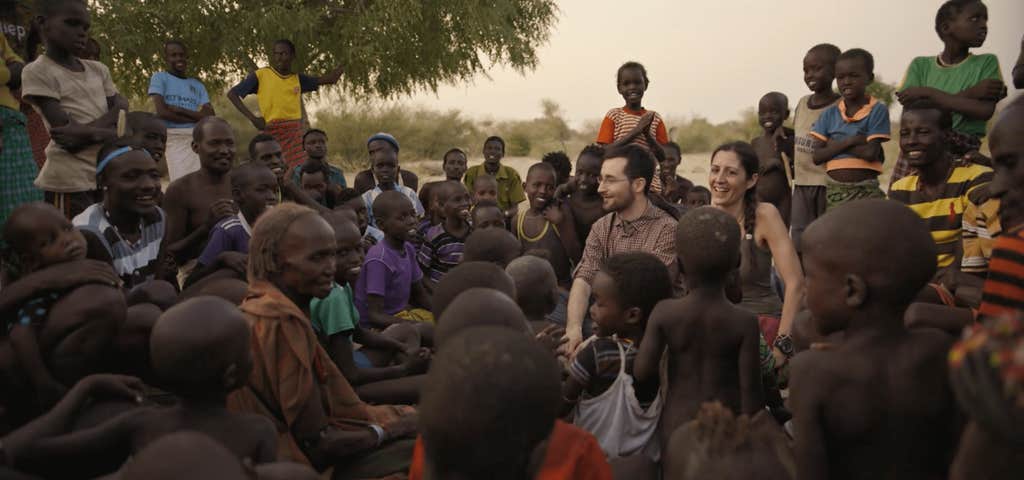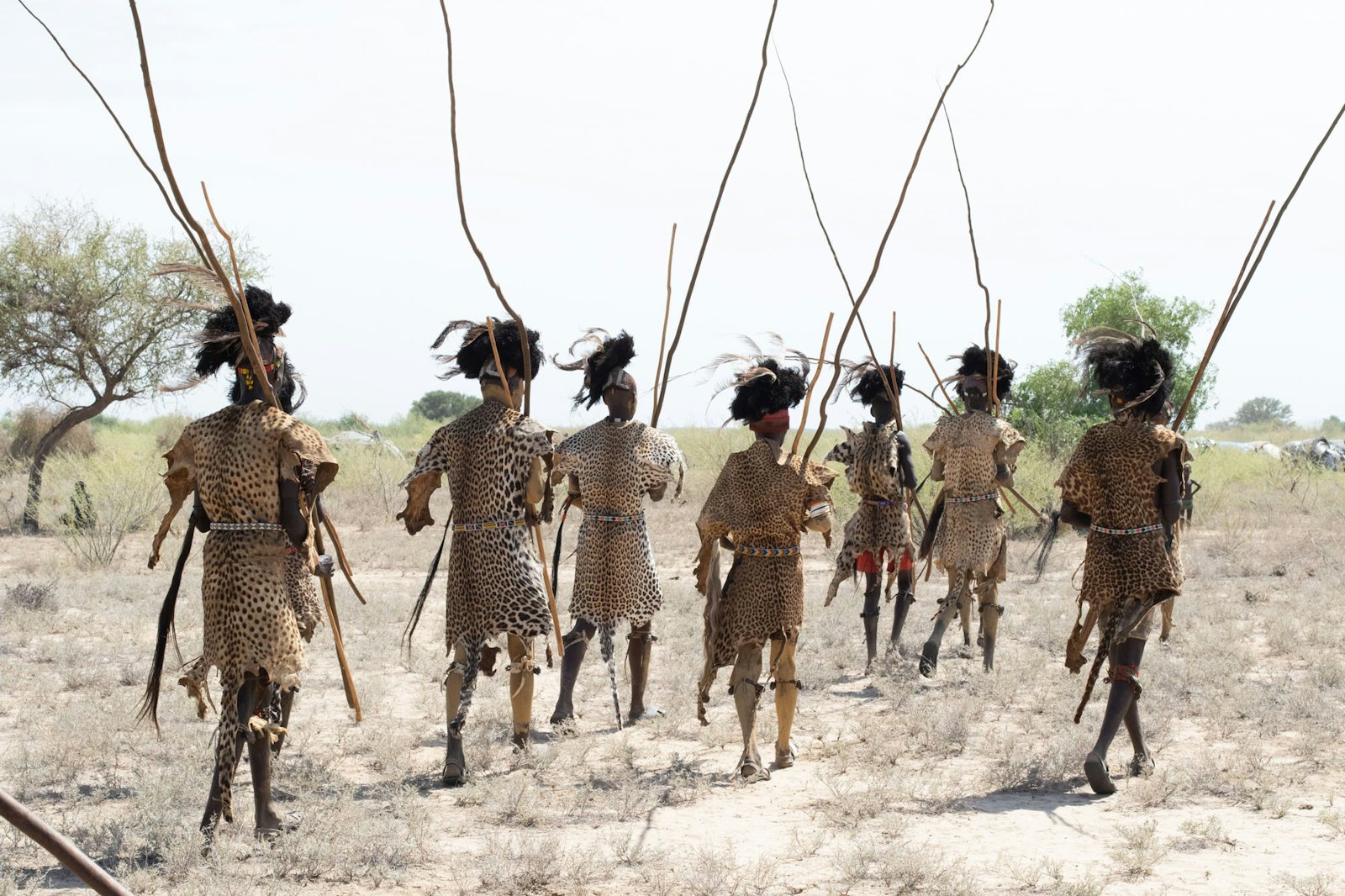After three years of hard work, the Western conservation scientists had formed a relationship with the Daasanach, a nomadic community in northern Kenya. Mar Cabeza and Álvaro Fernández-Llamazares had regularly visited from Helsinki to work with the tribe to improve wildlife conservation in the region where they live.
In 2018, the Daasanach trusted the scientists enough to invite them to observe a traditional coming-of-age ceremony called Dimi. The ceremony lasts several weeks and takes place in a temporary village in a remote location, where makeshift huts are arranged in two rings. It’s a time of singing, dancing, feasting, and ritual slaughter of livestock.
As the ceremony unfolded, Fernández-Llamazares and Cabeza, who work at the Helsinki Institute of Sustainability Science (HELSUS), became horrified. The Daasanach draped themselves in the skins of cheetahs and leopards, civets and genets, the very animals the conservation scientists were trying to protect. One day, Fernández-Llamazares and Cabeza counted 85 skins worn by ceremony members.

“I have built my whole research career showing that local communities support wildlife,” Fernández-Llamazares said as he reflected on that moment. “But what are you supposed to do when faced with a tradition that undermines nature? I feel so lost.”
Fernández-Llamazares poses his doleful question in Shepherds of the Earth, a remarkable 2022 documentary that has yet to find a distributor in the United States. The film is remarkable because Fernández-Llamazares and Cabeza are uncommonly frank in sharing their conflicted feelings about their research in Kenya.
“I still have a pain in my stomach when I think about that,” Cabeza told me recently. “What shocked us were the dimensions of it, and the brutality of it. Suddenly having so many endangered animals in front of you, and the feathers and the tails and everything. Àlvaro and I were shaking. We asked to please stop filming this, as we needed to digest it.”
“What are you supposed to do when faced with a tradition that undermines nature?”
The scientists’ dilemma is one that often challenges conservation practitioners around the world: How to reconcile the preservation of local indigenous culture—which itself is vanishing in a rapidly globalizing world—with the values of wildlife conservation, especially when they appear directly in conflict.
The Daasanach people extend throughout South Sudan, southern Ethiopia, and northern Kenya. The HELSUS scientists focused on the Kenyan Daasanach, locally known as Gál urru, or people from the south, who number about 17,000. The Daasanach live on land hailed as the “cradle of humankind.” Within their nomadic range lies Lake Turkana, where fossils of at least three early hominids—Homo erectus, habilis, and boisei—testify to the region’s status as a point of origin for the human species. Sibiloi National Park was established in 1973 with the dual purpose of protecting the world-famous paleontological sites around Lake Turkana, and its wildlife, although in time the former designation has eclipsed the latter in terms of priority.
Tribes other than the Daasanach live in—and war over—this territory. According to Fernández-Llamazares and Cabeza, the tribes have been displaced for the management of Sibiloi National Park. This practice in Africa and elsewhere around the world has been derided by historians of the environmental movement as “fortress conservation.” Cabeza was originally asked to visit Sibiloi by her paleontology colleagues in Finland to assess the conservation status of the wildlife and “do something about the growing number of park incursions” by local tribes, Cabeza said. “It was what we were asked to do, but I didn’t feel it was the right thing to do.”
Instead, during their first visit, Cabeza and colleagues drove around the park to look at the landscape and meet the locals. “The first shock was the defaunation—the loss of fauna,” she said. “We also had a lot of encounters with herders inside the park and we found kids with guns being very afraid of us, running away from us. That made us very worried about the tensions in the area.” Cabeza decided she and her fellow scientists should approach the Daasanach with care, “and not approach this from a pure ecological, pure conservation approach.”
“There are less cheetahs and leopards, and every friend I have needs the skin.”
As the documentary shows, Cabeza and her fellow scientists held group meetings with the Daasanach to listen to their views on wild animals. Lokomeri Natodo, the elder of the Daasanach community, explained the tribe’s relationship with wild animals in turn. “We slaughter wild animals and eat them like cattle. We see no difference. They taste the same,” Natodo said. “When people were hungry, they didn’t want to kill their cattle, so they killed wild animals and were not hungry anymore. We poached and killed also for fun. We killed for food and we also used the skins for sleeping and in ceremonies. And so, the wildlife disappeared.”
The Dimi ceremony is the beating heart of Daasanach culture—a rite of passage for men to become true and respected members of their community. In one group meeting, recorded by the scientists, a Daasanach member explained that the ceremony “makes the killing of animals a matter of pride.” Another added, “What I like the most of Dimi is gathering with my people, sharing our stories and our songs.” An elder in the group asked a young man if he wanted to stop Dimi. “No,” he replied, “but I do not know how I am going to find a skin. Now there are less cheetahs and leopards, and every friend I have needs the skin for Dimi, and even if I can buy it, it is too expensive. What am I going to do when my daughter is old enough? Without the skin, I cannot do Dimi.”
The young man’s worry about shortages of animal skins points to a place where the objectives of tribe and conservationist align. Jenny Glikman, an expert in the field of human-wildlife coexistence who leads research on human dimensions for the Instituto de Estudios Sociales Avanzados (IESA-CSIC) in Spain, explained that some indigenous people have shown a willingness to adapt to conservationists’ proposals. She points to the success of Lion Guardians, a nonprofit founded by conservation biologists Leela Hazzah of Egypt and Stephanie Dolrenry of the U.S., which works with the Maasai tribe in South Kenya.
“The Maasai traditionally hunted lions for a coming-of-age ceremony. They had to kill a lion to become a warrior,” Glikman explained. But in the past 50 years, an estimated 50 percent of lions have disappeared. The Lion Guardians “instituted a change so that rather than killing, the Maasai become the protectors, the guardians of the lions.” The Maasai now hold a ceremony on how you choose the lion to protect. “This way some of the tradition survives, because that’s the important aspect: the connection between man and lion,” Glikman said.
Glikman and the HELSUS scientists agree the path toward resolving the often seemingly intractable conflict between Western scientists and indigenous peoples is through communication. “I hope that we should all be more aware about what’s around us, be more respectful, carry fewer prejudices and seek to talk to people, especially wherever we go and do research,” Cabeza said. “We go to many places but we do not ask any questions, and we make a lot of assumptions. We want to fix problems that are not problems, or they are not the type of problems of that place. For me that is the big message: Go with open eyes and open ears and a big heart and try to see what you find out.”
The HELSUS scientists made an illustrated book of the Daasanach’s myths and stories and relationships with animals and presented it to them. They listed the book’s authors as the Daasanach Community. The tribe’s gratitude gave the scientists hope that further collaboration with them might lead to change. They crafted a proposal for use of synthetic replicas of animal skins, a substitution that only the Daasanach millennials were receptive to. “There was resistance from the elders,” Cabeza said. “Things will not change in one day, they will change slowly.”
However, good intentions and projects proposed by Western conservationists cannot serve as the final word, Cabeza said. Resolutions to conserve animal wildlife should be sealed by the indigenous people themselves. “It’s up to them to decide,” she said. ![]()
Lead photo: Members of the Daasanach in animal skins. Photo by Daniel Burgas Riera.
































